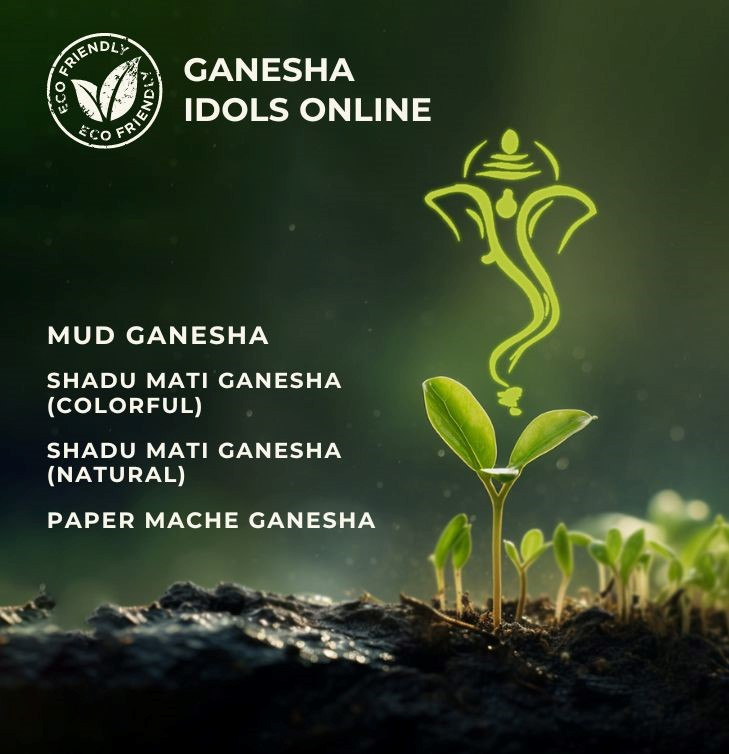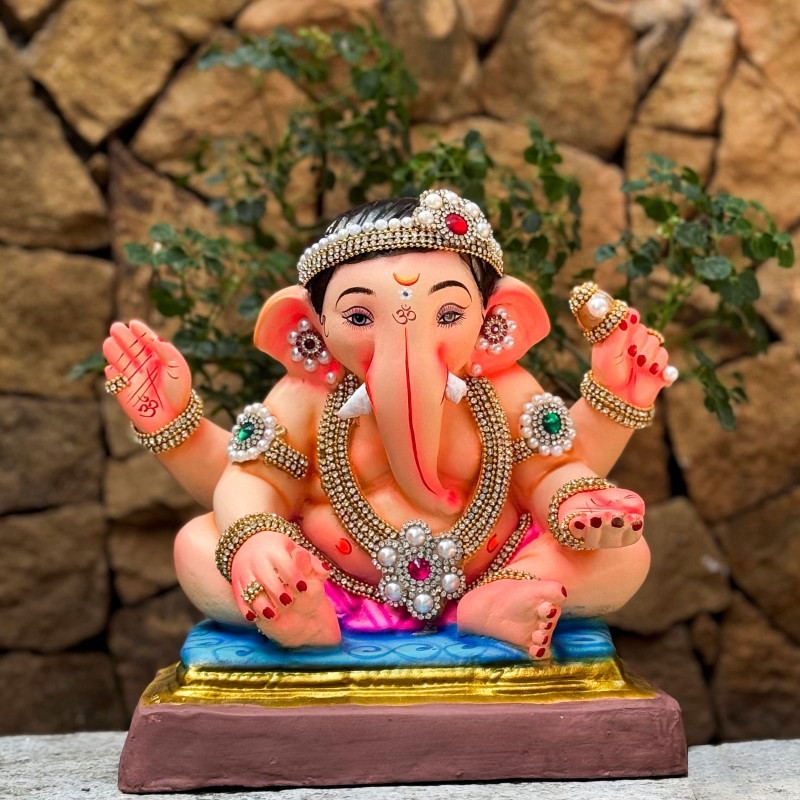Key Takeaways from Green Practices' Approach:
-
Idol Choice is Paramount:
- Prioritize Eco-Friendly Idols: The most significant impact comes from choosing idols made from natural, biodegradable materials.
- Materials of Choice: Green Practices emphasizes idols made of:
- Shadu Mati (Natural Clay): Dissolves quickly and completely in water, leaving no harmful residue. Often colored with natural pigments like multani mitti, haldi, and kumkum. (Available in India - www.greenpractices.in)
- Paper Mache: Made from recycled paper pulp and adhesive, these are lightweight, durable, and environmentally friendly.
- Mud Idols: Crafted from organic clay and soil, symbolizing a return to nature upon immersion. (Available in India - www.greenpractices.in)
- Avoid PoP (Plaster of Paris): PoP idols do not dissolve easily, pollute water bodies for months, release toxic chemicals (from paints and glitters), and endanger marine life, ultimately impacting human health through the food chain.
-
Sustainable Decorations:
- Embrace Nature: Use natural materials like fresh flowers (marigolds, lotuses), leaves, and even fruits. These are beautiful and compostable.
- Reuse and Upcycle: Opt for fabric banners, old newspapers, upcycled materials, and wooden torans instead of single-use plastic or synthetic decorations.
- Organic Rangoli: Use natural ingredients like turmeric, rice flour, flower petals, or coffee grounds for vibrant, eco-friendly rangoli designs instead of synthetic colors.
- LED Lighting: Choose energy-efficient LED lights for illumination.
-
Mindful Offerings and Puja:
- Eco-Friendly Puja Thali: Switch to reusable metal or bamboo thalis.
- Organic Offerings: Prefer organic flowers and fruits without pesticides.
- Natural Incense & Diyas: Use natural, non-toxic incense sticks and candles (like soy wax tealights) that don't release harmful chemicals into the air. Diyas made from recycled materials are also a good choice.
- Composting: Actively compost all organic offerings (flowers, leaves, food waste) to create nutrient-rich soil for gardens, completing the sustainability cycle.
-
Waste Reduction and Management:
- Say No to Single-Use Plastic: Avoid plastic cups, plates, bags, and cutlery. Encourage guests to bring their own reusable water bottles.
- Reusable Alternatives: Use traditional crockery, steel utensils, or biodegradable cutlery for communal meals.
- Responsible Gifting & Wrapping: Encourage experience gifts or sustainable products. Wrap gifts in recyclable or reusable materials like cloth, newspaper, or brown paper.
- Community Initiatives: For public celebrations, advocate for collective composting systems, proper waste segregation, and encourage attendees to use reusables.
-
Responsible Immersion (Visarjan):
- Home Visarjan: Many eco-conscious devotees perform symbolic immersion at home in a bucket or container, then use the dissolved clay/mud for plants.
- Artificial Ponds: Encourage the use of artificial immersion tanks provided by local authorities to prevent pollution of natural water bodies.
In essence, an eco-friendly Ganesh Chaturthi, as promoted by Green Practices, is about making informed choices that respect both religious sentiments and the environment, ensuring a celebration that is joyous, meaningful, and sustainable for future generations.




